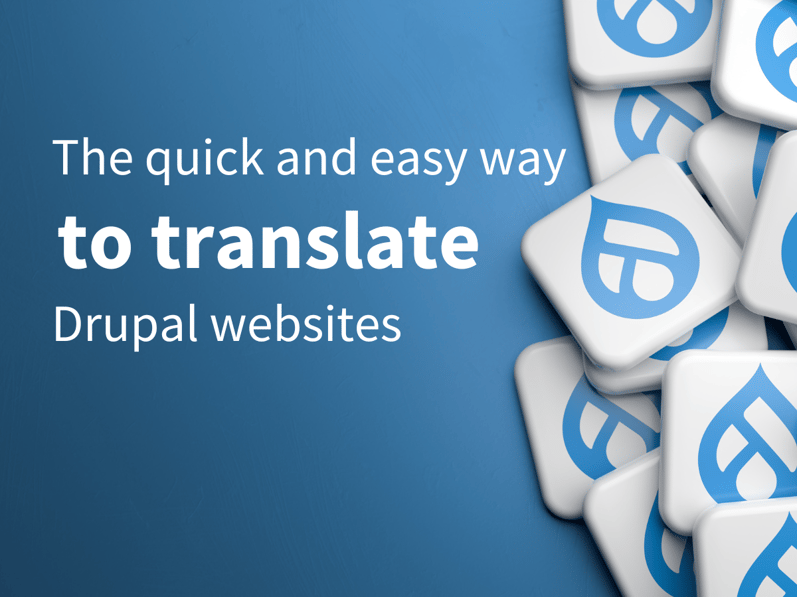
Do you like the idea of getting Drupal content translated quickly? You can – and it’s easy! Plug-in solutions allow you to choose pages and send them to your translation agency at the touch of a button, and then the translated pages are sent straight back to Drupal.
Alongside WordPress and Joomla, Drupal is one of the most widely used content management systems. By late August 2022 there were 873,000 websites created with Drupal (source: Statista.com), and as open-source software, it’s free.
Translating Drupal websites
If you want your Drupal website to cater for an international audience, you need content in multiple languages. And if your translations are handled by a translation agency, there are various ways to send the individual pages to them. There’s nothing wrong with the “Basic” option – manually exporting and reimporting the pages – but you can make life easier for yourself using plug-ins. This form of automation is especially beneficial if you regularly have new content from Drupal that needs to be translated.
Translating with Drupal plug-ins
There are lots of handy plug-ins for Drupal, one of which is the Translation Management Tool (TMGMT). Once installed on your server, it provides basic multilingual translation functionality. This enables manual import and export of the individual website pages as XLIFF files, but if you want to make your Drupal translation workflow even simpler – and above all faster – the plug-in also gives you a direct interface to your translation agency. So you can order professional translations from Drupal itself, and the process of integrating the translated content into your web pages is just as smooth.
Once the TMGMT plug-in is installed in the backend, it’s available for as many languages as you need. In addition to the TMGMT tool, you’ll usually need a plug-in specifically designed for the CAT tool you’re using in order for Drupal to connect to your agency’s translation system. This is equally simple to install, and then you can get started: choose the pages you want translated in Drupal, and send them to the agency at the touch of a button.
What happens at the translation agency
The seamless interface ensures your content is integrated straight into the translation agency’s system, and the translation workflow (as previously agreed with you) begins automatically. That means no more e-mails and folders with attachments and files, and no more of those endless phone calls explaining what needs to be translated. You can manage all the stages in the translation management process in Drupal itself, but the project will also be available to view in the agency’s customer portal if you prefer. When the translation is complete, the pages are automatically integrated back into Drupal and are ready for you to review.
How you benefit from automated translations using Drupal plug-ins
The Drupal translation plug-ins mean translations in a wide range of languages are just a few clicks away. Here’s how you benefit from integrating your Drupal website with the system at your translation agency:
- easy set-up
- no more copy and paste
- fast translations
- quick turnaround times
- direct integration of the translation process into your workflows
- save time and money
- no other programs/portals required for ordering translations
- various automation options
Another available feature is automated ordering: when content is added or edited on the website, it can be sent to the translation agency automatically.
Main image: © Adobe Stock


